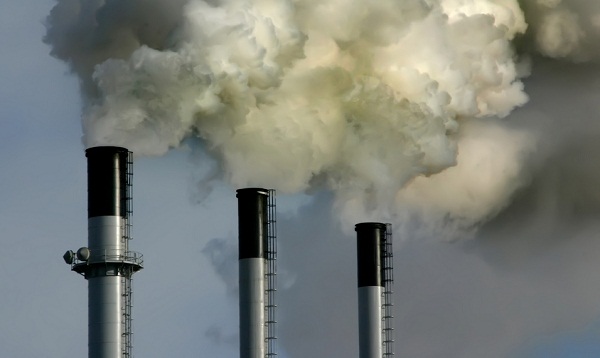It’s the wild card in the renewables vs. fossil fuels debate: What price to put on carbon dioxide, which exacts social costs that escape capture by the free market?
The United States has estimated CO2’s toll to be $21 per ton, but a new analysis [PDF] says the true cost is actually between $55 and $266 per ton – numbers that if accepted, would make renewables a far more competitive player in the energy marketplace.

“The analysis shows that if the well-being of future generations is properly taken into consideration, the benefits of cleaner electricity sources are greater than their upfront costs, both for new generation, and for replacing our dirtiest plants,” Laurie Johnson, chief economist in the climate and clean air program at the Natural Resources Defense Council, writes in a blog post that explains the study she co-authored. “In contrast, using the government’s estimate of CO2 damage costs tends to favor dirtier energy sources, and an ever riskier climate.”
What accounts for the vast difference with the government’s figure? It comes down to what economists call “discounting.” This is a standard practice of shrinking – discounting – the value of things to reflect how much more a dollar today, in real terms, is worth than a dollar tomorrow. (Johnson explains the concept nicely as “compound interest running in the opposite direction.” She writes: “if you deposited $41,200 into a bank account today it would grow to approximately $100,000 in thirty years. You’d have a real net gain of $58,800. Economists thus say that $100,000 in thirty years should be valued today at $41,200.”)
The impact of this can be profound. Johnson points out that the government’s “lowest discount rate of 2.5 percent per year would value $100,000 worth of climate damages happening thirty years from now at approximately $48,000 (and at one hundred years roughly $8,500).” (You can download a PDF of the government report here.)
Johnson makes a host of wonky econ arguments as to why this discounting is excessive, but the heart of the argument is that the trade-offs we’re talking about here are intergenerational. As Johnson says: “many of the people benefitting from emitting CO2 today are not the same people as those that will be harmed by it in the future.”
So instead of using the government’s annual discount rates of 2.5, 3 and 5 percent, the new study uses 1, 1.5 and 5 percent. With the lower discount rates, even natural gas, at outrageously low prices now due to the shale gas boom, loses its edge.
“At our two lowest discount rates (1 and 1.5 percent), we find that the real cost (i.e. generation costs inclusive of pollution damages) of building new electricity generation from natural gas (what the market currently favors) is higher than for wind or natural gas with (carbon capture and sequestration),” Johnson writes. “At 1 percent, solar photovoltaic and coal with CCS would also be cheaper. These findings are driven by differences in climate change costs only, as SO2 pollution from coal with capture is small, and negligible for natural gas. When the government’s (higher) discount rates are used, conventional natural gas appears to be cheaper than these cleaner technologies.”